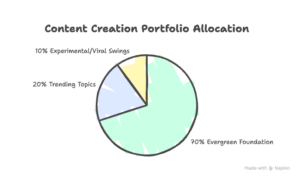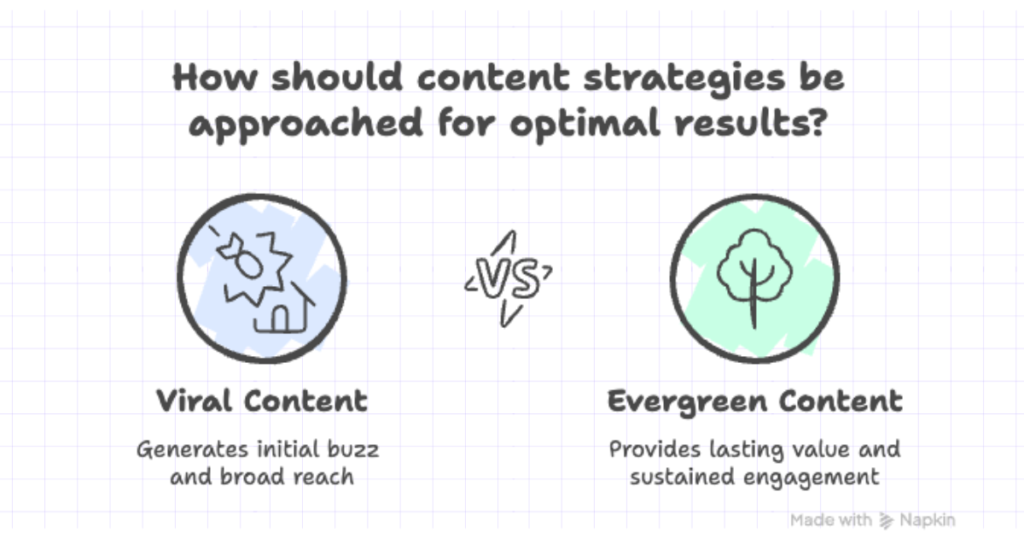Okay, so here’s the thing. Two weeks ago, I was riding this incredible high from a blog post I’d written about some Instagram trend that absolutely exploded. I’m talking 40,000 impressions, 2,000 clicks, 4,000 views in just 15 days. I mean, for someone like me who usually gets maybe 500 views on a good day? This felt like I’d won the content lottery.
I was literally refreshing my analytics every hour (don’t judge me, we’ve all been there), watching those numbers climb and feeling like I’d finally cracked the code. You know that feeling when you post something and it just… takes off? That dopamine rush is real, folks.
But then—and here’s where it gets interesting—I started noticing something that made me feel a bit, well, stupid.
The Reality Check That Changed Everything
While I was celebrating my viral moment, this little blog post I’d written months ago about Roblox username ideas was just… quietly doing its thing. No fanfare, no explosive growth, just steady, consistent traffic day after day. Actually, let me be more specific—it was getting about 50-70 views daily, which doesn’t sound impressive until you realize that’s over 1,500 views per month, every month.
And here I was, watching my “viral” post slowly fade into irrelevance while my “boring” Roblox guide kept chugging along like the little engine that could.
That’s when it hit me. I’d been thinking about this all wrong.
The False Choice I Was Making (And Maybe You Are Too)
You know what’s funny? I was treating this like some kind of content strategy death match. Team Viral vs. Team Evergreen. Pick a side and stick with it.
But sitting there at 2 AM (because that’s when all great realizations happen, right?), scrolling through my analytics, I realized I was being an idiot. Well, maybe not an idiot, but definitely short-sighted.
Here’s what I mean: that Instagram post that got 40,000 impressions? It didn’t just disappear into the void. It did something way more valuable—it introduced me to thousands of people who’d never heard of me before. Some of them subscribed to my newsletter. Others followed me on social media. A few even reached out with collaboration ideas.
In other words, my viral content wasn’t competing with my evergreen content. It was feeding it.
My “Aha!” Moment (Complete with Coffee Stains)
I was sitting in this little coffee shop downtown—you know the type, mismatched chairs and that slightly burnt smell that somehow makes the coffee taste better—when I started sketching out this theory on a napkin. (Yes, a literal napkin. Sometimes the clichés write themselves.)
What if viral content is like… okay, bear with me here… what if it’s like those free samples they give out at Costco? You’re not making money on the sample, but it gets people to try your product and maybe buy the whole package.
My viral Instagram post was the sample. My evergreen Roblox guide (and all my other long-term content) was the full product line.
Actually, let me rephrase that because I think I can explain it better…
The Portfolio Approach That Actually Makes Sense
I’ve started thinking about my content like a financial portfolio. You know how financial advisors always tell you to diversify? Don’t put all your eggs in one basket and all that? Same principle applies here.
Here’s my breakdown (and I’m still tweaking this, by the way):

70% Evergreen Foundation This is my bread and butter. The stuff that’ll still be relevant in six months, a year, maybe even longer. Think comprehensive guides, tutorials that solve real problems, resource lists that people bookmark.
I spend most of my time here because, honestly? It’s where the magic happens long-term. My Roblox post is still generating traffic 8 months later. That’s 8 months of people finding my work without me having to do anything extra.
20% Trending Topics This is where I jump on industry news, seasonal content, current events. The lifespan is shorter, but the reach can be huge. My Instagram post falls into this category—it was relevant for a hot minute, but boy did it make an impact during that minute.
10% Experimental/Viral Swings This is my “why not?” category. Contrarian takes, behind-the-scenes stuff, personal stories about my failures (and trust me, there are plenty). Some of these tank completely. Others surprise me and take off. You never really know.
What I Learned From My Numbers (Warning: Math Ahead)
Okay, so I’m not great at math—I literally use a calculator for tips at restaurants—but I started crunching some numbers that made me feel better about my strategy.
My viral Instagram post:
- Time invested: About 3 hours (including the 47 times I rewrote the headline)
- Immediate return: 2,000 clicks
- That’s roughly 667 clicks per hour
- Lifespan: Maybe 3-4 weeks tops
My evergreen Roblox guide:
- Time invested: 6 hours (I really went deep on this one)
- Monthly return: About 200 clicks
- Initially that’s only 33 clicks per hour
- But here’s the kicker—it’s been 8 months, so that’s 1,600 total clicks and counting
The viral content wins the sprint. The evergreen content wins the marathon. And you know what? I need both.
The Thing Nobody Talks About (But Should)
Here’s something that took me way too long to figure out: viral content isn’t just about the immediate numbers. It’s about the compound effect it has on everything else you create.
When my Instagram post blew up, it didn’t just get views. It got me:
- 150 new email subscribers (and their lifetime value is way higher than a single page view)
- Connections with other creators in my space
- A mention in someone else’s newsletter (which drove even more traffic)
- Social proof that I could point to in future pitches
That Roblox post? It’s been quietly building my domain authority, establishing me as someone who knows gaming content, and creating a steady stream of people who discover my other work.
They’re not competing—they’re collaborating.
My New Strategy (Still a Work in Progress)
So here’s what I’m doing now, and honestly, it’s working better than anything I’ve tried before:
I use viral content as my marketing budget. When I write something trendy that gets shared, I make sure to mention my evergreen content in it. Not in a salesy way, but naturally. Like, “If you’re interested in gaming content creation, I wrote this comprehensive guide about…”
And when I create evergreen content, I look for trending hooks to promote it. That Roblox post got a second wind when I shared it during a conversation about online safety for kids. Different angle, same valuable content.
The Mistakes I Made (So You Don’t Have To)
Looking back, I was making some pretty obvious errors:
- I was measuring success wrong. Views and clicks aren’t everything. The relationship-building that happens with viral content is harder to measure but often more valuable.
- I was treating them as separate strategies. They work best when they support each other.
- I was getting too caught up in the highs and lows. Viral content made me feel like a genius. Slow evergreen growth made me feel like I was failing. Both reactions were wrong.
- I wasn’t thinking long-term enough. That Instagram post might seem “dead” now, but it’s part of my story, my credibility, my portfolio of work.
What This Means for Your Content Strategy
If you’re anything like me (and let’s face it, if you’ve read this far, you probably are), you’ve been thinking about this wrong too.
Stop asking “Should I create viral or evergreen content?”
Start asking “How can my viral content feed my evergreen content, and vice versa?”
Your trending posts are audience acquisition. Your evergreen posts are audience retention. You need both engines running.
Actually, you know what’s interesting? I just realized something while writing this. This very blog post is trying to be both. It’s jumping on the trending conversation about content strategy (viral potential), but it’s also trying to provide timeless insights about building a sustainable content practice (evergreen value).
We’ll see how it goes, I guess.
The Bottom Line (Because We All Love Those)
That Instagram post that got 40,000 impressions wasn’t a fluke—it was an investment. And that quiet Roblox guide isn’t just generating traffic—it’s building the foundation for everything else I create.
I don’t have to choose between the quick wins and the slow builds. I can have both.
Your audience discovers you through viral content. They stick around for the evergreen value.
And honestly? That’s a pretty good deal.
What’s your take on this? Have you found yourself caught between chasing viral moments and building long-term assets? I’d genuinely love to hear your stories—the successes and the face-plants. We’re all figuring this out together.

